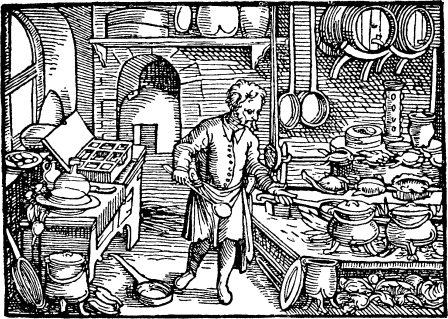


History of Cheese
By: Sharon Zupke
The making of cheese dates back more than 4,000 years. According to ancient legend, it was made accidentally by an Arabian merchant who put his supply of milk into a pouch made from a sheep’s stomach as he set out on a journey across the desert. The rennet in the lining of the pouch, combined with the heat of the sun, caused the milk to separate into curd and whey, and he found that the whey satisfied his thirst, while the cheese (curd) had a delightful flavor that satisfied his hunger.
Travelers from Asia are believed to have brought the art of cheese making to Europe, where it flourished and became an established food. The Pilgrims included cheese in the Mayflower’s supplies when they made their voyage to America in 1620. Cheese making remained a local farm industry until the 19th century, when in 1851 the first cheese factory in the U.S. was built in Oneida County, New York.
As the U.S. population grew, the demand for cheese increased, and the industry gradually moved west to the rich farm lands of Wisconsin. The wholesale cheese industry showed phenomenal growth during the latter half of the 1800s – by 1880 there were 3,923 dairy factories nationwide that produced 216 million pounds of cheese valued at $17 million. Natural cheese production grew from 418 million pounds in 1920 to 2.2 billion pounds by 1970, and to more than 6 billion pounds by the 1990s.
Currently, more than one-third of milk produced each year in the U.S. is used to manufacture cheese. Recent increases in the overall demand for farm milk have in large part been due to the continued growth of the cheese industry. As consumer appetites for all types of cheese continue to expand, so will the industry.
(Source of information – IDFA)
8 Reasons to Eat Cheese
1. A Serving of Dairy: The average American eats 33.5 pounds of cheese each year. That might sound like a lot, but it’s only about 1.5 ounces per day, or just 1 of 3 recommended daily servings of dairy.
2. Calorie Conscious: Cheese contributes only 5% of total calories and 9% of total fat in the U.S. diet. Counting calories? Feta, mozzarella and ricotta naturally have fewer calories.
3. Lactose Intolerant? No problem. Look for aged cheeses, which have very low amounts of lactose.
4. All Natural: Cheese is made from just four basic ingredients – milk, salt, starter culture and rennet.
5. Less Sodium: Cheese contributes only 8% of sodium in the U.S. diet. Softer, less aged varieties, such as mozzarella are great lower sodium options.
6. Strong Bones & Teeth: Cheese is among the richest dietary sources of calcium. One serving provides about 20% of your daily calcium needs.
7. Protein Powerhouse: Cheese is an excellent natural source of high quality protein. An average serving of cheese contains 10 grams of protein.
8. It’s Delicious: With more than 600 varieties, types and styles of Wisconsin cheese, there’s a cheese for everyone.
(Source of information – WMMB)
Posted on 10/02/2015 at 01:29 PM